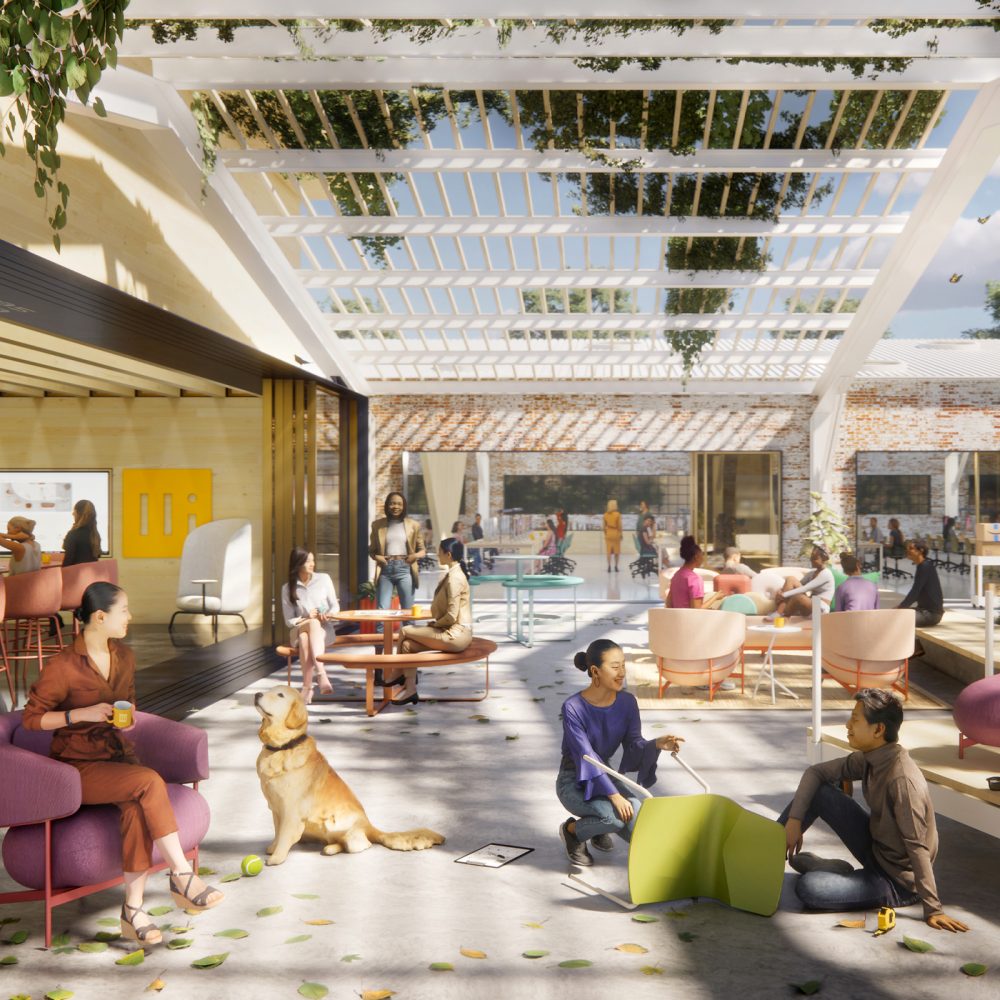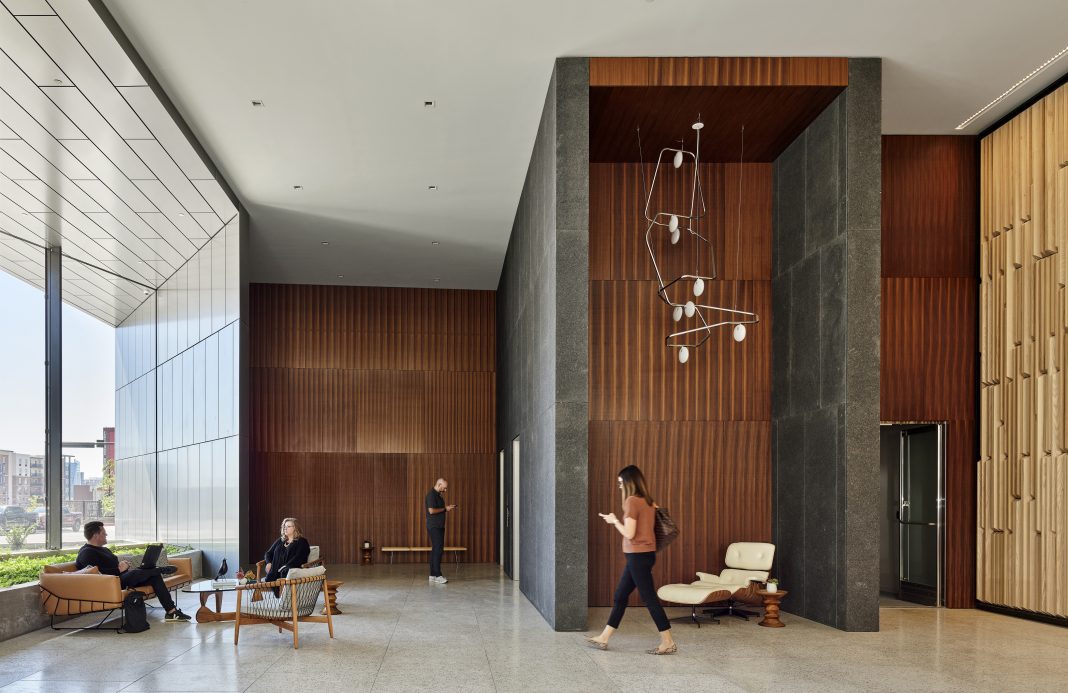For decades, workplace design has typically revolved around one deceptively simple metric: square feet (SQF) per person. It’s measurable, easy to benchmark and effective for an era when work happened almost exclusively in the office.
Today, that calculation should no longer depend on such simplicity. Hybrid work, evolving employee expectations and generational shifts have changed the very nature of why and how people choose to come into the office. When presence is optional, the true value of the workplace is measured by how worthwhile the time spent there becomes.
What’s needed now is a shift from space efficiency to spatial effectiveness, from filling seats to fulfilling experiences. That starts with a new mindset around programming and workplace design strategy.
A Refreshed Way to Think About Workplace Design
Workplace design isn’t just about what fits; it’s about what fuels. The modern office should become a platform for performance and a canvas for culture. Creating places that employees are drawn to because it feels worth it.
This requires a new kind of design approach, a process grounded in experience, purpose and operational alignment. The outcome is a more intentional, magnetic workplace that reflects how people work today — and how they want to feel when they do.
| Classic Design Approach | Experience-Based Design |
|---|---|
| Starts with head count and seating ratios | Starts with business purpose and user needs |
| Prioritizes space efficiency | Prioritizes effectiveness and enrichment |
| Designed around departments | Designed around journeys and activities |
| HR, IT involved late in the process | HR, IT and leadership aligned from the beginning |
| Success measured by occupancy | Success measured by engagement and impact |
The difference is subtle but can be powerful. Traditional programming answers, “How many people?” Experience-based programming asks, “What do people need to do their best work?”
Building for Purpose
The most compelling workplaces today are designed around one core fundamental: a day well spent.
This means frictionless workflows, meaningful collaboration and spaces that support autonomy and momentum. When workplace design leads with questions like, “How do we remove friction?” and “Where do we foster energy and belonging?”, we start to define space by experience, not just function.
Experience-based design begins by asking why the workplace exists for a given organization. Is it to fuel innovation? Drive mentorship? Build culture? Deepen client trust? Different organizational priorities require different spaces and different tools for measuring success.
Creating a workplace that delivers on these ambitions requires a design process that integrates HR, IT and operations from the start. Corporate policies around flexibility, well-being or learning shouldn’t be added in after a test fit; they should shape the test fit. The result is a workplace that’s modern, operationally aligned and culturally resonant.

To move from efficiency to effectiveness, start by embedding these steps into your process:
- Reframe the Brief. Begin with business purpose and desired employee experiences versus head count.
- Engage Cross-Functionally. Involve HR, IT, hospitality teams and leadership early. Let their policies and aspirations shape the design.
- Design for Experiences. Define space types by what they enable: focus, energy, connection and creativity.
- Design for Diversity of Use. Move beyond one-size-fits-all. Offer a range of environments that serve different modes of work.
- Track Time Well Spent. Measure outcomes through engagement, productivity and satisfaction.
- Create Feedback Loops. Establish ongoing tools for user input so spaces can adapt and improve continuously.
- Treat Spaces Like a Brand Channel. Every environment should tell the story of your culture and express your values in action.
These pragmatic steps create a strong foundation. They allow for design that is rooted in operational alignment and supported by measurable outcomes. Then, they become launchpads for something bigger.

Measure What Matters
If the design framework is rooted in experience, so must the success metrics. Instead of asking, “How many seats do we need?”, we should be asking:
- Time Well Spent. Did the environment remove friction and help people do their best?
- Experience That Enriches. Did employees leave energized, connected and proud of their contributions?
- Trust to Empower. Did the workspace support autonomy, flexibility and meaningful work?
Quantitative metrics still matter, but they must be paired with qualitative insights. Tools like pulse surveys, observational studies and platform analytics (e.g., room usage, app integrations) can help close the feedback loop between design intent and lived experience.
The best workplaces iterate with intention, adjusting to how the workforce is responding in real time.
Make Work Feel Worth Showing Up For
The modern and magnetic workplace doesn’t try to force attendance — it earns it. By designing with intentionality, we can create places and experiences employees don’t want to miss. Think:
- A rotating café with a chef series.
- All-hands meetings held in immersive storytelling spaces.
- Pop-up team events like unscheduled desk side guacamole or rolling soda carts.
- Wellness and learning programs tied directly into physical environments.
These ideas can be strategic. They animate the culture and elevate the value proposition of the workplace itself.
When Traditional Design Still Has a Place
Let’s be clear: This isn’t about discarding the fundamentals. Traditional space metrics still serve a purpose. There’s value in understanding seat ratios, adjacency needs and long-term occupancy plans. But those tools should follow — not lead — the design process. They are tools to check and scale a strategy.
The Future of Workplace Design
The workplace is moving away from being utilized and thought of as a container for people and desks. Instead, it is becoming a living system, a stage for culture and a platform for growth. When design begins with experience, purpose and alignment, the office can transform from a cost center into a force multiplier for the organization. This is where pragmatic tools meet aspirational vision. Yes, it’s about frameworks, ratios, adjacencies and surveys.
It’s also about something more: creating workplaces that are magnets, not mandates, drawing people in because the experience is meaningful, energizing and worth commuting.

The office, when designed with intention, becomes:
- A catalyst for culture — where values are visible, celebrated and lived.
- A launchpad for innovation and trust — where teams, tools and ideas align seamlessly.
- A place where every day feels well spent — where people leave with a sense of belonging, pride and momentum.
The future of workplace design doesn’t always need to be about how much we can fit in a space. It can be about how much potential can be unleashed and how effectively we design workplaces as purpose-built ecosystems that enrich lives, elevate culture and advance organizational ambition.


